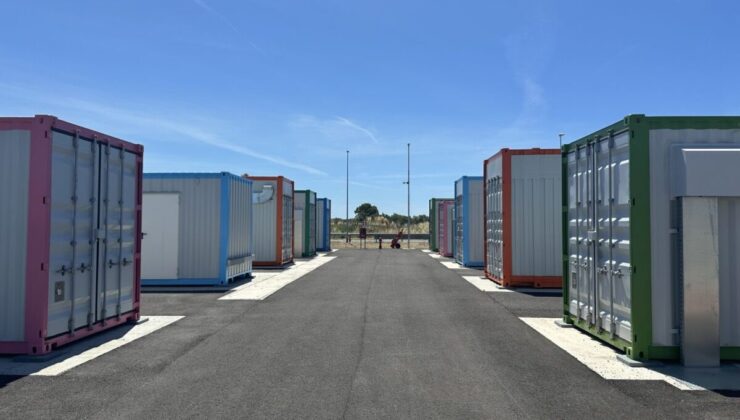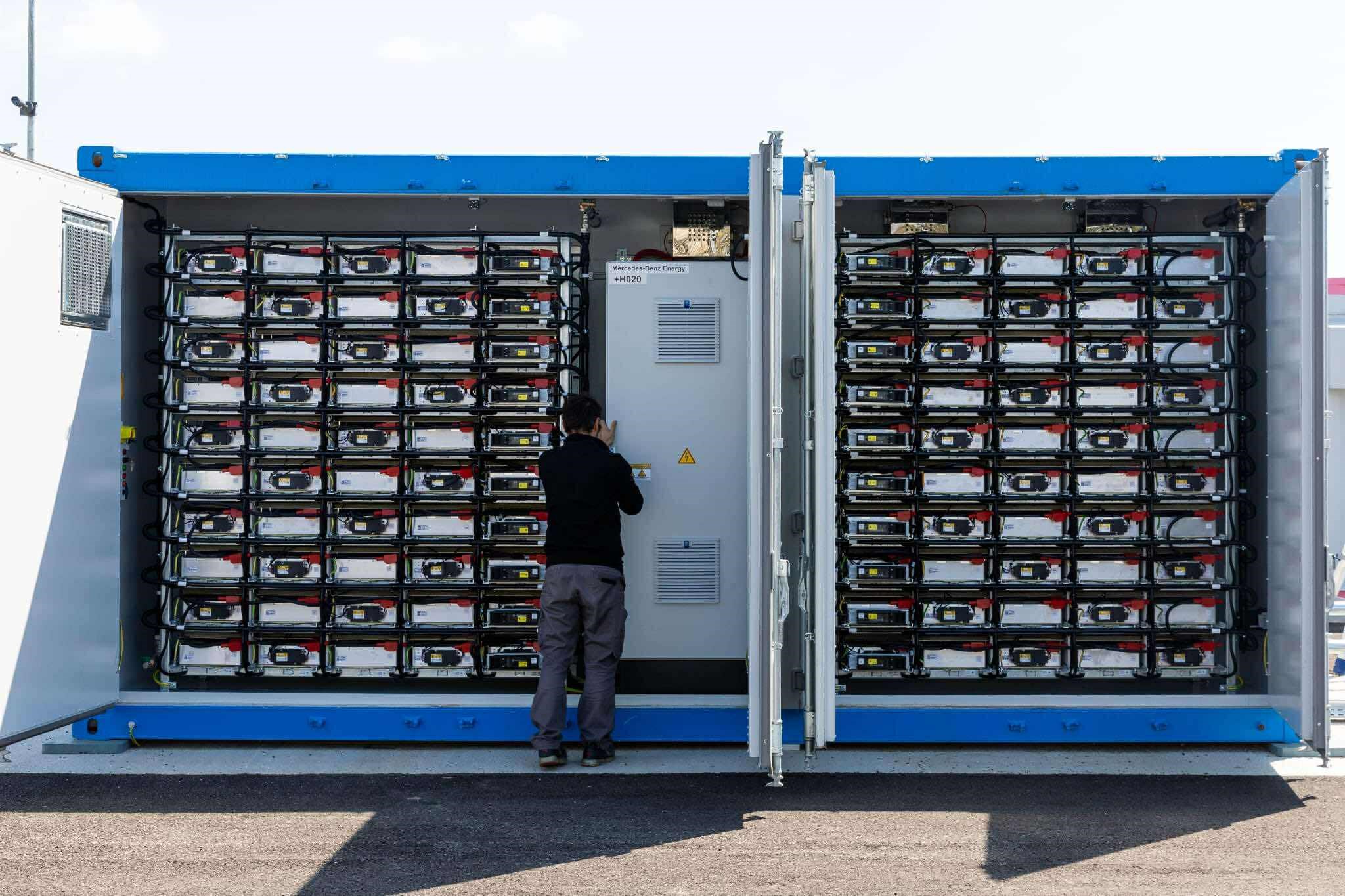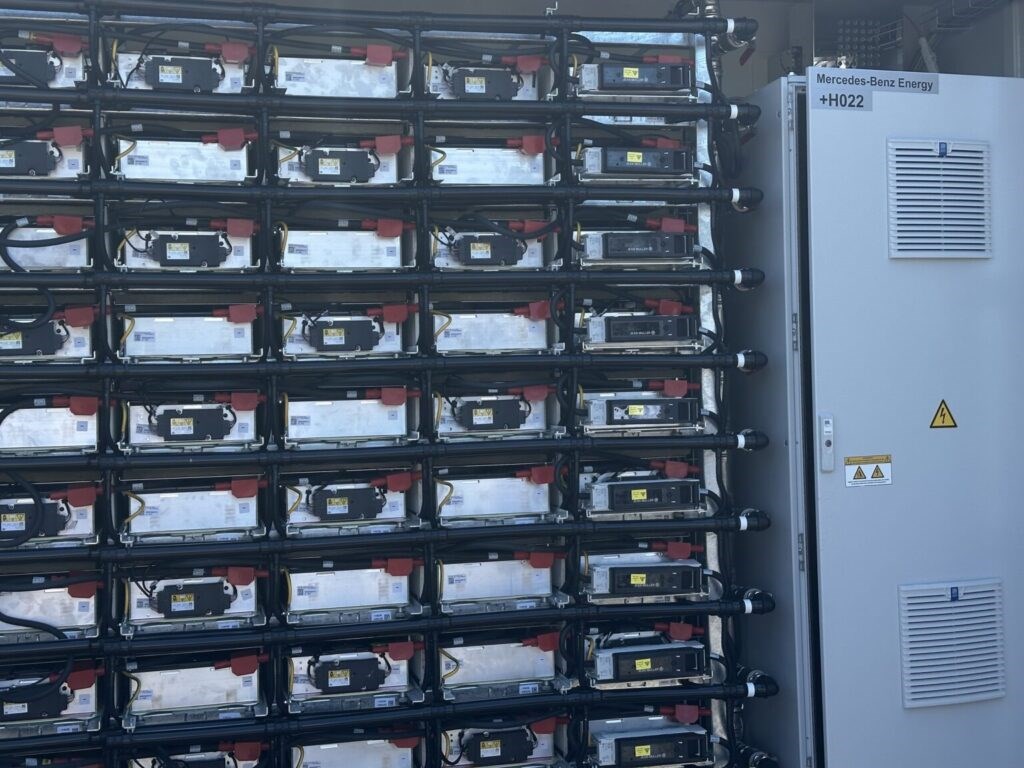

The Fiumicino Airport, located in the heart of Italy’s capital, Rome, is setting a new benchmark in sustainability with the launch of a revolutionary project. The state-owned energy giant, Enel, has introduced the country’s most extensive second-hand battery storage system. This trailblazing initiative, aptly named Pioneer, has been realized through the innovative recycling of batteries from electric vehicles.

The Pioneer system boasts a 2.5 MW / 10 MWh energy storage capacity, achieved by repurposing a total of 762 battery packs and modules. Approximately 50% of these batteries were sourced from Mercedes-Benz vehicles, with around 30% coming from brands under the Stellantis umbrella, such as Chrysler and Citroën. The remaining batteries were contributed by Nissan. The project is a collaborative effort with Aeroporti di Roma (ADR), the airport operator, while technical expertise was provided by the renowned Fraunhofer Institute, based in Germany.

Fiumicino Airport is already home to Europe’s largest self-consumption solar power plant. The Pioneer system will be seamlessly integrated with the 31 GWh “Solar Farm” facility, ensuring optimal energy utilization. An advanced optimization software will analyze real-time solar production, airport consumption data, battery performance, and energy demands. This strategic integration aims to deliver energy precisely when and where it is most needed, maximizing efficiency.
The overall cost of the project is estimated at approximately 5.5 million euros, with the European Commission providing financial support of 3 million euros. This funding underscores the project’s importance and its potential impact on sustainable energy practices.
Nicola Rossi, President of Enel Innovation, highlighted a significant decrease in energy storage costs, stating, “Energy storage costs, which were 1,400 euros per kilowatt in 2010, have now dropped to between 100 and 130 euros per kilowatt.” The global battery energy storage capacity is on an upward trajectory, with figures rising from 30 GWh in 2022 to 100 GWh in 2023, and projected to reach 170 GWh in 2024. Rossi further noted that second-hand batteries retain about 80 percent of their capacity, making them ideal for such applications. The Pioneer system is expected to have a lifespan of 10 to 15 years, offering a promising return on investment.
INSURANCE NEWS
1 gün önceSİGORTA
1 gün önceSİGORTA
3 gün önceSİGORTA
3 gün önceSİGORTA
3 gün önceSİGORTA
3 gün önceBES / HAYAT
3 gün önceSİGORTA
3 gün önceSİGORTA
3 gün önceSİGORTA
3 gün önce 1
DJI Mini 5: A Leap Forward in Drone Technology
20041 kez okundu
1
DJI Mini 5: A Leap Forward in Drone Technology
20041 kez okundu
 2
xAI’s Grok Chatbot Introduces Memory Feature to Rival ChatGPT and Google Gemini
14056 kez okundu
2
xAI’s Grok Chatbot Introduces Memory Feature to Rival ChatGPT and Google Gemini
14056 kez okundu
 3
7 Essential Foods for Optimal Brain Health
12929 kez okundu
3
7 Essential Foods for Optimal Brain Health
12929 kez okundu
 4
Elon Musk’s Father: “Admiring Putin is Only Natural”
12787 kez okundu
4
Elon Musk’s Father: “Admiring Putin is Only Natural”
12787 kez okundu
 5
Minnesota’s Proposed Lifeline Auto Insurance Program
10660 kez okundu
5
Minnesota’s Proposed Lifeline Auto Insurance Program
10660 kez okundu
Sigorta Güncel Sigorta Şikayet Güvence Haber Hasar Onarım Insurance News Ajans Sigorta Sigorta Kampanya Sigorta Ajansı Sigorta Sondakika Insurance News